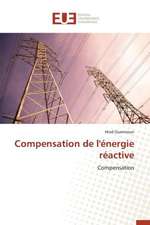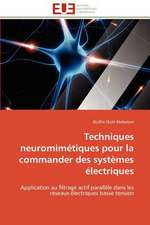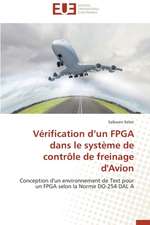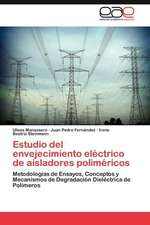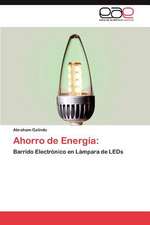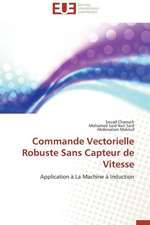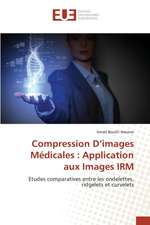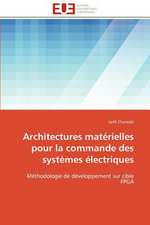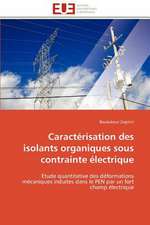Photovoltaic Systems Engineering
Autor Roger A. Messenger, Homayoon “Amir” Abtahien Limba Engleză Hardback – 23 ian 2025
| Toate formatele și edițiile | Preț | Express |
|---|---|---|
| Paperback (1) | 386.26 lei 3-5 săpt. | +30.64 lei 6-10 zile |
| CRC Press – 18 dec 2020 | 386.26 lei 3-5 săpt. | +30.64 lei 6-10 zile |
| Hardback (2) | 766.36 lei 3-5 săpt. | +31.13 lei 6-10 zile |
| CRC Press – 23 ian 2025 | 766.36 lei 3-5 săpt. | +31.13 lei 6-10 zile |
| CRC Press – 7 mar 2017 | 791.67 lei 6-8 săpt. |
Preț: 766.36 lei
Preț vechi: 842.16 lei
-9% Nou
Puncte Express: 1150
Preț estimativ în valută:
146.71€ • 150.88$ • 121.71£
146.71€ • 150.88$ • 121.71£
Carte disponibilă
Livrare economică 29 ianuarie-12 februarie
Livrare express 14-18 ianuarie pentru 41.12 lei
Preluare comenzi: 021 569.72.76
Specificații
ISBN-13: 9781032726212
ISBN-10: 1032726210
Pagini: 414
Ilustrații: 260
Dimensiuni: 156 x 234 x 28 mm
Greutate: 0.75 kg
Ediția:5
Editura: CRC Press
Colecția CRC Press
Locul publicării:Boca Raton, United States
ISBN-10: 1032726210
Pagini: 414
Ilustrații: 260
Dimensiuni: 156 x 234 x 28 mm
Greutate: 0.75 kg
Ediția:5
Editura: CRC Press
Colecția CRC Press
Locul publicării:Boca Raton, United States
Public țintă
PostgraduateNotă biografică
Roger Messenger is professor emeritus of Electrical Engineering at Florida Atlantic University in Boca Raton, Florida. He received his Ph.D. in Electrical Engineering from the University of Minnesota and is a Registered Professional Engineer, a former Certified Electrical Contractor, and a former NABCEP Certified PV Installer, who has enjoyed working on a field installation as much as he enjoys teaching a webinar or working on the design of a system or contemplating the theory of operation of a system. His research work has ranged from electrical noise in gas discharge tubes to deep impurities in silicon to energy conservation to PV system design and performance. He worked on the development and promulgation of the original Code for Energy Efficiency in Building Construction in Florida and has conducted extensive field studies of energy consumption and conservation in buildings and swimming pools.
Since his retirement from Florida Atlantic University in 2005, he has worked as Vice President for Engineering at VB Engineering, Inc, in Boca Raton, FL and as Senior Associate at FAE Consulting in Boca Raton. While at VB Engineering, he directed the design of several hundred PV designs, including the 1 MW system on the roof of the Orange County Convention Center in Orlando, FL. While at FAE Consulting, he led the design of an additional 6 MW of systems that were installed. Since 2020 he has reviewed over 60 MW of residential systems, including more than 8 MWh of residential Battery Energy Storage. He has also been active in the Florida Solar Energy Industries Association and The Florida Alliance for Renewable Energy, has served as a peer reviewer for the U. S. Department of Energy and has served on the Florida Solar Energy Center Advisory Board. He has conducted numerous seminars and webinars on designing, installing and inspecting PV systems. In May, 2024 he received a Florida Solar Energy Industries Association Hall of Fame award for extraordinary contributions to the Florida Solar Industry.
Homayoon “Amir” Abtahi, is currently Associate Professor of Mechanical Engineering at Florida Atlantic University. He received his Ph.D. in Mechanical Engineering from M.I.T. in 1981 and joined Florida Atlantic University in 1983. In addition to his academic activity, he has a wealth of practical experience, much of which has been obtained as a volunteer. He is a Registered Professional Engineer in Florida and is a member of ASCE and SAE. He has held LEED Certification since 2007, is ESTIDAMA Certified in the United Arab Emirates and is a Certified General Contractor and a Certified Solar Contractor in the State of Florida. His interests range widely from PV to PEM Fuel Cells, integrated capacitor/battery power modules and Atmospheric Water Generation.
In 1985, he installed the first known solar power system in Venezuela and was responsible for the first known application of solar power for post hurricane emergency power and lighting and Ham Radio communication operations in the aftermath of Hurricane Hugo in St. Croix in 1989 and Hurricane Marilyn in St. Thomas in 1995. In 1989, he published the first comprehensive catalog of 12-V appliances for use with PV systems.
Recently, he has been involved with PV installations in the Caribbean, South America, Bangladesh and India. In the 2008-2010 time period, he was responsible for design and installation of over 100 residential and 20 commercial/industrial PV systems. Over the past 15 years, he has had responsibility for design and installation of 1 Million BTUD of solar hot water and solar process heat. Along with the PV and thermal applications, he has had experience with heat exchangers, MEP plan review, LEED projects, tracking PV, Micro-turbines, parabolic trough solar and other hybrid applications.
Since his retirement from Florida Atlantic University in 2005, he has worked as Vice President for Engineering at VB Engineering, Inc, in Boca Raton, FL and as Senior Associate at FAE Consulting in Boca Raton. While at VB Engineering, he directed the design of several hundred PV designs, including the 1 MW system on the roof of the Orange County Convention Center in Orlando, FL. While at FAE Consulting, he led the design of an additional 6 MW of systems that were installed. Since 2020 he has reviewed over 60 MW of residential systems, including more than 8 MWh of residential Battery Energy Storage. He has also been active in the Florida Solar Energy Industries Association and The Florida Alliance for Renewable Energy, has served as a peer reviewer for the U. S. Department of Energy and has served on the Florida Solar Energy Center Advisory Board. He has conducted numerous seminars and webinars on designing, installing and inspecting PV systems. In May, 2024 he received a Florida Solar Energy Industries Association Hall of Fame award for extraordinary contributions to the Florida Solar Industry.
Homayoon “Amir” Abtahi, is currently Associate Professor of Mechanical Engineering at Florida Atlantic University. He received his Ph.D. in Mechanical Engineering from M.I.T. in 1981 and joined Florida Atlantic University in 1983. In addition to his academic activity, he has a wealth of practical experience, much of which has been obtained as a volunteer. He is a Registered Professional Engineer in Florida and is a member of ASCE and SAE. He has held LEED Certification since 2007, is ESTIDAMA Certified in the United Arab Emirates and is a Certified General Contractor and a Certified Solar Contractor in the State of Florida. His interests range widely from PV to PEM Fuel Cells, integrated capacitor/battery power modules and Atmospheric Water Generation.
In 1985, he installed the first known solar power system in Venezuela and was responsible for the first known application of solar power for post hurricane emergency power and lighting and Ham Radio communication operations in the aftermath of Hurricane Hugo in St. Croix in 1989 and Hurricane Marilyn in St. Thomas in 1995. In 1989, he published the first comprehensive catalog of 12-V appliances for use with PV systems.
Recently, he has been involved with PV installations in the Caribbean, South America, Bangladesh and India. In the 2008-2010 time period, he was responsible for design and installation of over 100 residential and 20 commercial/industrial PV systems. Over the past 15 years, he has had responsibility for design and installation of 1 Million BTUD of solar hot water and solar process heat. Along with the PV and thermal applications, he has had experience with heat exchangers, MEP plan review, LEED projects, tracking PV, Micro-turbines, parabolic trough solar and other hybrid applications.
Cuprins
1. Background. 2. The Sun. 3. Introduction to PV Systems. 4. Grid-Connected Utility Interactive PV Systems. 5. Structural Consideratiions. 6. Energy Storage Systems. 7. Grid-Connected Systems with Energy Storage (ESS). 8. Stand-Alone PV Systems. 9. Economic Considerations. 10. The Physics of Photovoltaic Cells. 11. Evolution of PV Cellss and Systems.
Descriere
The primary purpose of PV Systems Engineering is to provide a comprehensive set of PV knowledge and understanding tools for the design, installation, commissioning, inspection and operation of PV systems.
Recenzii
"The new edition of the text represents an outstanding improvement over earlier versions. I would highly recommend it to any faculty interested in teaching a course related to photovoltaic systems engineering for the following reasons: a) It represents an excellent balance of theory and practical engineering application of science, technology, and economic analysis; b) It is up-to-date on the latest technology, system components, codes and standards, and accepted design practices, c) The problem sets at the end of each chapter are well thought out and provide students with relevant needed practice necessary for developing comprehensive design knowledge and skills for a variety of PV system configurations; d) The book is extremely well organized, well written, easy to follow, and should appeal to a large segment of both student and practicing engineering populations. In short, it is an excellent engineering text on extremely important subject matter from which faculty will enjoy teaching and from which student learning will be enhanced."
— Jerry Ventre, Florida Solar Energy Center (Retired), USA
"This book, now in its 4th edition, is thorough, comprehensive and frequently revised, so it is up-to-date. I have always liked it, in earlier editions, for bothering to address the low profile but important aspects of photovoltaic systems that tend to be left out of other books – the mechanical engineering aspects, including mounting methods, loads and stresses and wind loading; electrical protection; standards (for USA at least); wire sizing; junction boxes; environmental impacts, etc."
— Richard Corkish, University of New South Wales, Australia
"I find this book to be excellent, containing both the theoretical and practical knowledge to analyze and design a wide range of solar photovoltaic systems. I am not aware of any currently available books that include such breadth and depth."
— John Murray, Dine College, USA
— Jerry Ventre, Florida Solar Energy Center (Retired), USA
"This book, now in its 4th edition, is thorough, comprehensive and frequently revised, so it is up-to-date. I have always liked it, in earlier editions, for bothering to address the low profile but important aspects of photovoltaic systems that tend to be left out of other books – the mechanical engineering aspects, including mounting methods, loads and stresses and wind loading; electrical protection; standards (for USA at least); wire sizing; junction boxes; environmental impacts, etc."
— Richard Corkish, University of New South Wales, Australia
"I find this book to be excellent, containing both the theoretical and practical knowledge to analyze and design a wide range of solar photovoltaic systems. I am not aware of any currently available books that include such breadth and depth."
— John Murray, Dine College, USA







